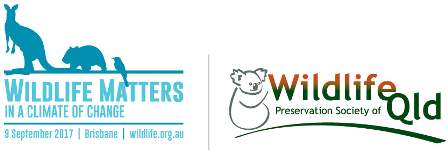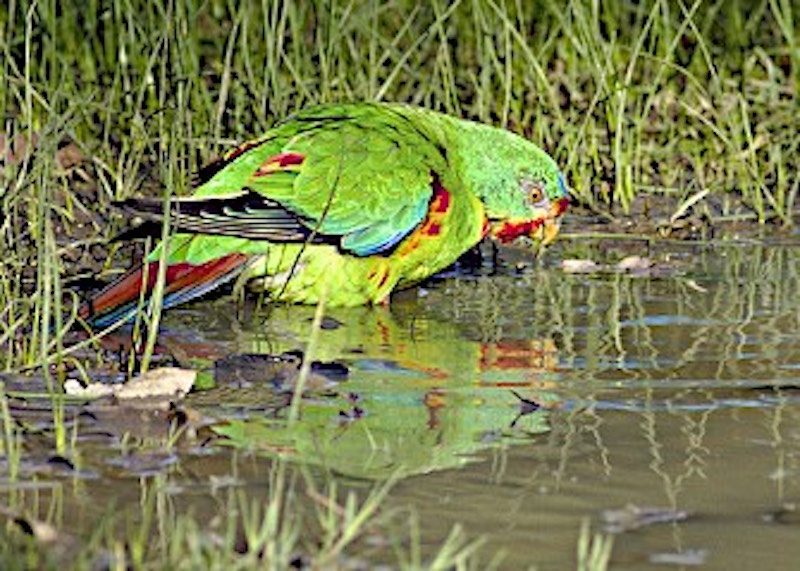It has been an interesting exercise getting photos of Striated Pardalotes breeding in their tunnel in the embankment on my property during August 2017.
It’s breeding season now – time for these birds to drill their 1metre-long tunnels into embankments.
These three shots, taken on 20 August, show the male and female pardalotes arriving at, sitting inside and departing from their tunnel:
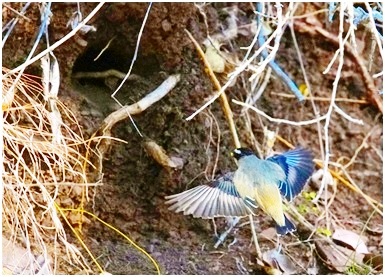
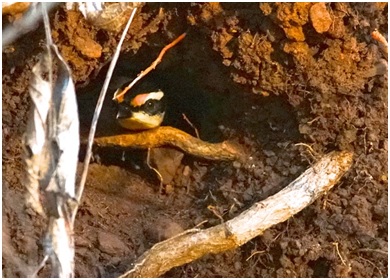
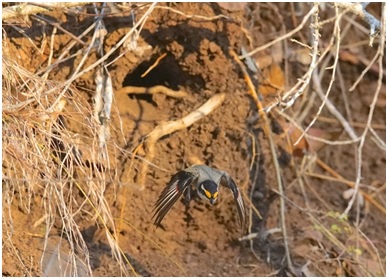
I’ve been watching these Striated Pardalotes for about 2 weeks and it seems they are now starting to feed their young. It’s interesting to note that they never call when they are anywhere near the nest, even when searching for food.
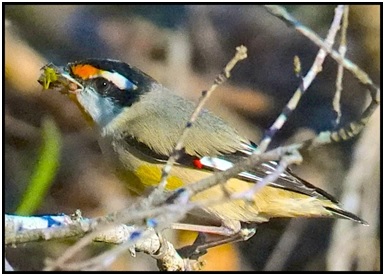 |
Returning to the tunnel with food for the chicks – August 2017 |
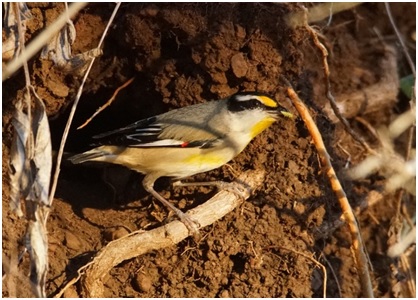
I believe the pardalotes communicate by emitting very quiet sounds when they fly in to swap patrols. Obviously they can’t see when the other is inside the tunnel so they must have a way of communicating when each one returns. I have tried to hear them, as my viewing spot is only about 7m away, but to no avail – the call must be either extremeley faint or the register is too high for the human ear.
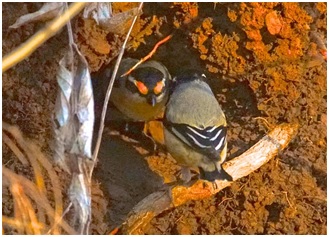 |
Parent changeover (8 August 2017) |
The parents seem to mainly return with lerps or psyllids, but I have also seen them arriving with small grubs. I can see the white lerps oozing out of their beaks.
Generally, one stays in the tunnel cavity whilst the other is out collecting, but sometimes they travel together or occupy the tunnel together for short periods.
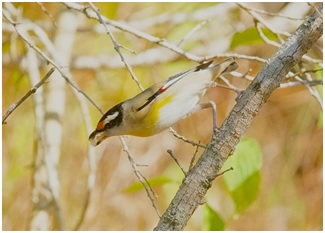 |
Pardaote with lerp (20 August 2017) |
I imagine the parents would have to keep the nest cavity clean, given that it is inside a tunnel. The following photo seems to support this theory:
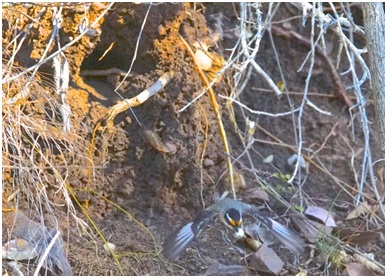 |
Removing a faecal pellet from the tunnel (20 August 2017) |
I believe these final two photos show the parents trying to entice the young to leave the nest (taken on the morning of 18 August).
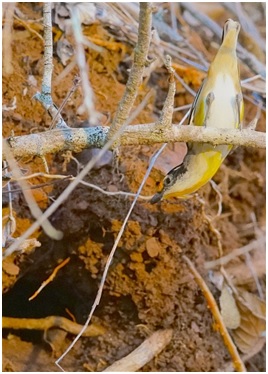
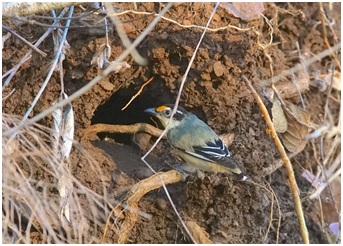
Note: You can learn more about the Striated Pardalote by reading Jim Butler’s Feather Fascination September 2017.


 Handy Hint: Press Ctrl + F, then type Red-cap to search for the robin.
Handy Hint: Press Ctrl + F, then type Red-cap to search for the robin.